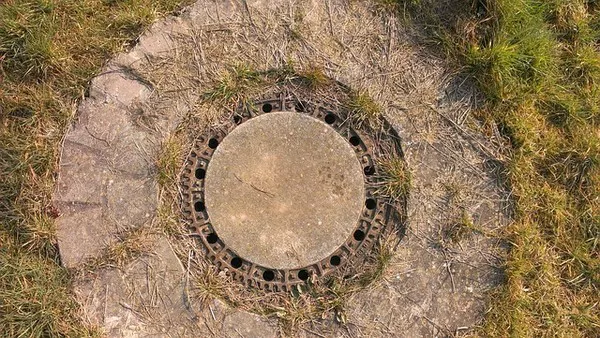Wastewater treatment is a complex process aimed at purifying contaminated water before it re-enters the environment. Among the myriad techniques employed in wastewater treatment, aeration stands out as a crucial step that plays a pivotal role in optimizing the effectiveness of treatment processes. This article delves into the purpose of aeration in wastewater treatment, exploring its mechanisms, benefits, and impact on the overall quality of treated water.
Understanding Aeration
Aeration is the process of introducing air into wastewater to facilitate the exchange of gases and promote biological oxidation. This controlled infusion of oxygen serves to enhance the natural degradation of organic and inorganic pollutants present in the wastewater. The process mimics the natural self-purification of water bodies, where aquatic organisms rely on dissolved oxygen for their metabolic processes.
In wastewater treatment plants, aeration is executed through various methods, including mechanical aeration, diffused aeration, and surface aeration. Regardless of the technique employed, the fundamental objective remains consistent: to provide an oxygen-rich environment that accelerates the activities of aerobic microorganisms responsible for breaking down contaminants.
Mechanisms of Aeration
The primary mechanism through which aeration exerts its influence on wastewater treatment is by replenishing the dissolved oxygen content. Organic matter in wastewater serves as a substrate for microorganisms that engage in aerobic digestion, transforming complex pollutants into simpler compounds like carbon dioxide and water. Oxygen serves as the electron acceptor in these metabolic processes, driving the microbial degradation of organic contaminants.
In addition to promoting aerobic digestion, aeration aids in the removal of undesirable gases such as hydrogen sulfide, which contributes to foul odors and corrosive effects in wastewater. The introduction of oxygen through aeration also prevents the occurrence of anaerobic conditions, which can lead to the release of methane, a potent greenhouse gas.
Key Benefits of Aeration
1.Enhanced Microbial Activity: Aeration accelerates the growth and activity of aerobic microorganisms responsible for breaking down organic matter. This leads to more efficient degradation of pollutants, resulting in cleaner water.
2. Improved Nutrient Removal: Aeration supports the removal of nutrients like nitrogen and phosphorus through the stimulation of microbial reactions. This is vital for preventing eutrophication, a phenomenon where excessive nutrient levels cause harmful algal blooms in water bodies.
3. Prevention of Anaerobic Conditions: By maintaining adequate levels of dissolved oxygen, aeration prevents the development of anaerobic zones that can produce foul-smelling gases and greenhouse emissions.
4. Odor Control: Aeration contributes to the reduction of foul odors associated with hydrogen sulfide and other volatile compounds present in wastewater.
5. Mixing and Homogenization: Aeration promotes mixing of wastewater, ensuring uniform distribution of microbes and nutrients. This leads to consistent treatment performance and reduces the formation of scum and solids.
6. Pathogen Reduction: Aerobic conditions created by aeration discourage the growth of pathogenic microorganisms, ultimately contributing to the reduction of disease-causing agents in treated water.
Impacts on Water Quality
The overarching impact of aeration on water quality cannot be overstated. By enabling effective microbial digestion of pollutants, aeration helps reduce the chemical oxygen demand (COD) and biological oxygen demand (BOD) of wastewater. Lower COD and BOD values indicate reduced levels of organic and biodegradable matter in the water, making it less harmful to aquatic life and humans.
Furthermore, aeration serves as a critical preparatory step for subsequent treatment processes, such as secondary clarification and tertiary filtration. The reduction of organic load through aeration simplifies downstream treatment operations, minimizing the strain on equipment and optimizing overall treatment efficiency.
Innovations in Aeration Technology
Advancements in technology have revolutionized the field of wastewater treatment, and aeration is no exception. Modern aeration systems employ automation, real-time monitoring, and sophisticated control mechanisms to ensure optimal oxygen delivery and distribution. This not only enhances treatment performance but also minimizes energy consumption and operational costs.
Diffused aeration systems, for instance, utilize fine bubble diffusers to disperse oxygen efficiently throughout the wastewater. The smaller bubbles increase the surface area for oxygen transfer, leading to improved dissolution rates and more effective microbial activity. These systems are designed to adapt to varying treatment demands, optimizing resource utilization and reducing the environmental footprint of wastewater treatment plants.
Conclusion
Aeration emerges as a linchpin in the process of wastewater treatment, serving as a catalyst for the degradation of pollutants and the optimization of water quality. By promoting the growth and activity of aerobic microorganisms, aeration facilitates the breakdown of organic contaminants, reduces odor-causing compounds, and prevents the formation of harmful gases. The benefits of aeration extend beyond mere treatment efficacy; they encompass energy efficiency, reduced environmental impact, and improved downstream treatment processes.
In a world grappling with the challenges of pollution, urbanization, and water scarcity, the role of aeration in wastewater treatment becomes even more pronounced. As technology continues to evolve and innovation thrives, the optimization of aeration processes promises to pave the way for a cleaner, healthier, and more sustainable future. The purpose of aeration in wastewater treatment, thus, remains paramount in the pursuit of safeguarding both our ecosystems and the well-being of societies worldwide.

